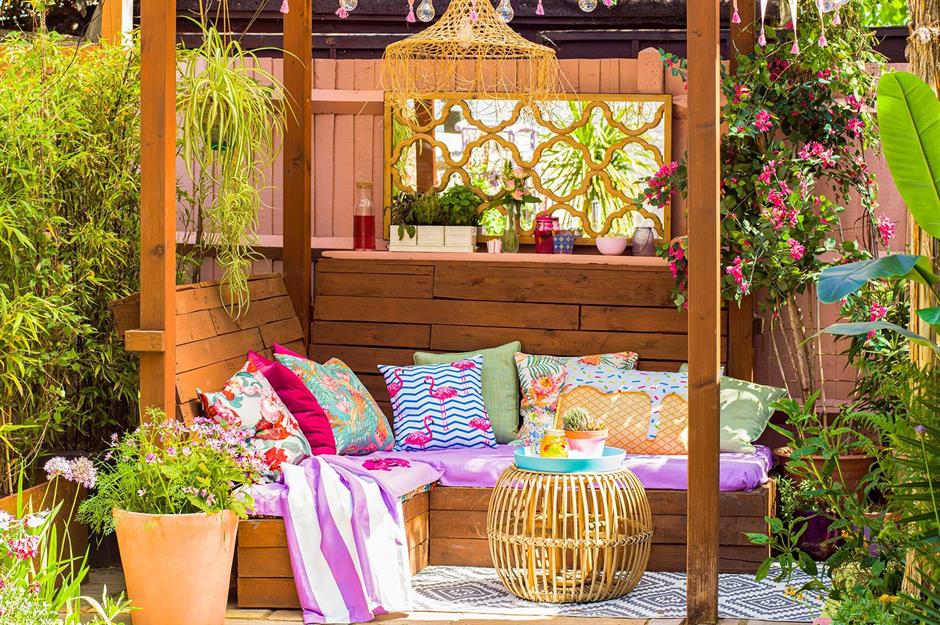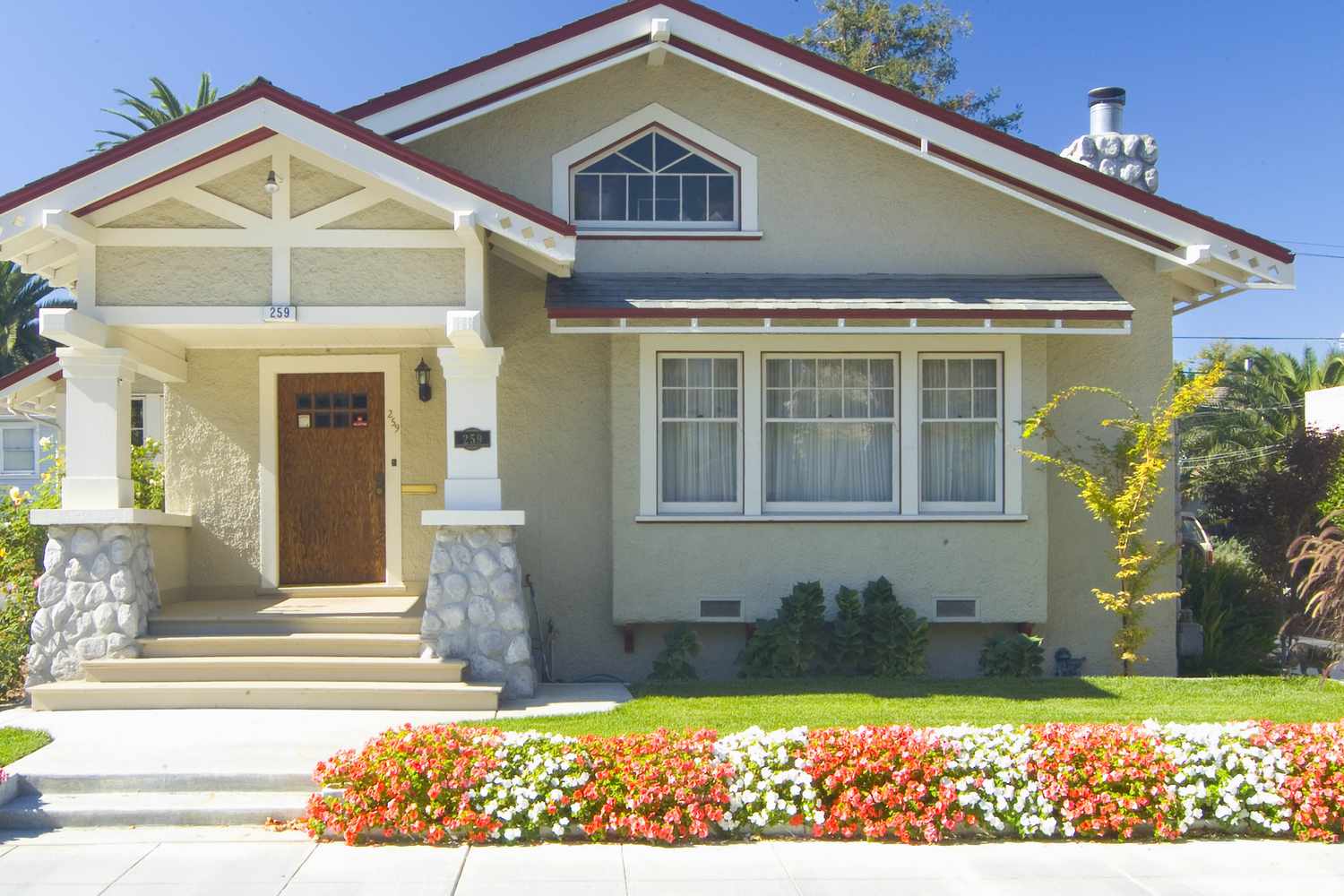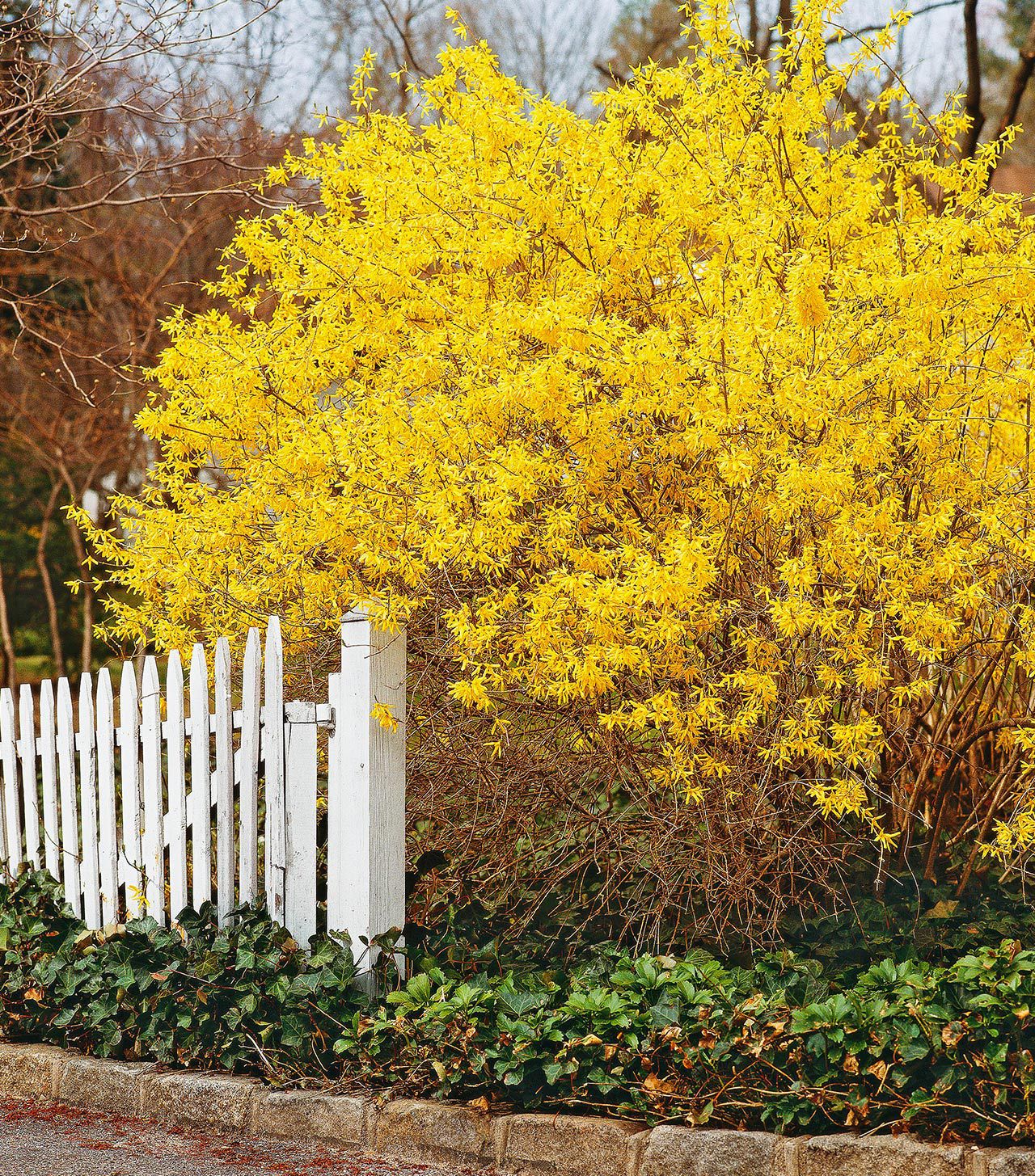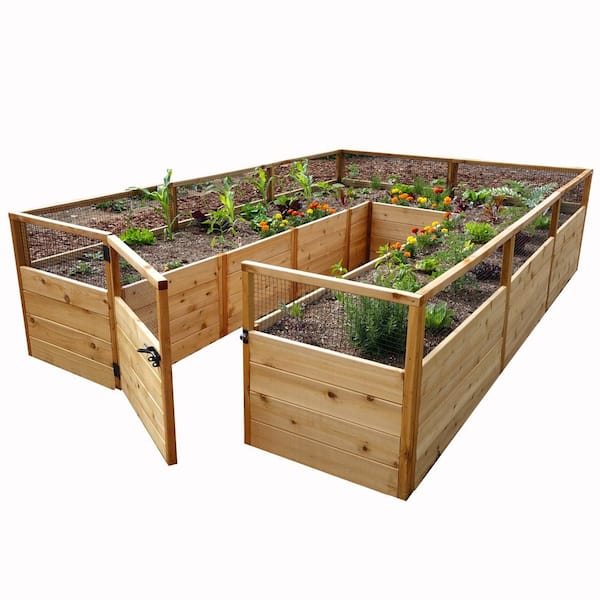For small gardens, choosing the right trees can maximize space and enhance aesthetic appeal. Here are the 10 best trees for small gardens.
A small garden doesn’t mean you have to compromise on greenery and beauty. With careful selection, you can find trees that fit perfectly into limited spaces while offering visual interest, shade, and even fruit. Compact and dwarf tree varieties are ideal for small gardens, providing lush foliage without overwhelming the area.
These trees can transform your yard into a cozy, verdant retreat. From ornamental trees with stunning blooms to fruit trees that provide fresh produce, the right choice can make a significant impact. Discover how to create a charming, nature-filled space with the best trees for small gardens.
Choosing The Right Tree
Small gardens can be tricky. You need to select trees wisely. The right tree can add beauty and shade. It must also not overpower the space. Let’s look at some key aspects.
Considerations For Small Gardens
There are several factors to consider for small gardens:
- Size at Maturity: The tree should not grow too large.
- Root System: Non-invasive roots are best for small spaces.
- Growth Rate: Choose a tree that grows at a manageable pace.
- Seasonal Interest: Look for trees that offer year-round appeal.
- Maintenance Needs: Pick a tree that requires minimal upkeep.
Tree Varieties And Growth
Here are some trees that work well in small gardens:
| Tree Variety | Max Height | Growth Rate | Special Features |
|---|---|---|---|
| Japanese Maple | 15-25 feet | Slow | Beautiful foliage, compact size |
| Dogwood | 15-30 feet | Moderate | Gorgeous flowers, attractive bark |
| Crabapple | 10-25 feet | Moderate | Colorful fruit, spring blossoms |
| Redbud | 20-30 feet | Moderate | Heart-shaped leaves, pink flowers |
| Dwarf Alberta Spruce | 10-12 feet | Slow | Dense foliage, conical shape |
Each of these trees has unique qualities. Some have vibrant flowers. Others offer striking foliage. Some provide winter interest with attractive bark. By considering these factors, you can choose the perfect tree for your small garden.
Dwarf Japanese Maple
The Dwarf Japanese Maple is a standout choice for small gardens. This compact tree offers stunning foliage and a graceful shape. It’s perfect for adding a touch of elegance to any yard, no matter the size.
Features And Benefits
The Dwarf Japanese Maple has many features that make it ideal for small gardens:
- Compact Size: This tree reaches only 4-6 feet tall, fitting snugly in small spaces.
- Vibrant Foliage: The leaves change colors with the seasons, from green to red to orange.
- Graceful Shape: Its cascading branches create a beautiful, umbrella-like form.
- Low Maintenance: It requires minimal pruning and care, making it easy to maintain.
- Versatility: Suitable for pots, rock gardens, and small yards.
Ideal Planting Conditions
For the best growth, plant your Dwarf Japanese Maple in the following conditions:
| Condition | Details |
|---|---|
| Soil | Well-drained, slightly acidic soil is ideal. |
| Sunlight | Partial shade or dappled sunlight is perfect. |
| Watering | Water regularly, but avoid waterlogged soil. |
| Temperature | Thrives in temperate climates, avoiding extreme heat. |
By providing these conditions, your Dwarf Japanese Maple will thrive and bring beauty to your garden for years.
Dogwood Trees
Dogwood Trees are perfect for small gardens. They offer stunning seasonal appeal and come in various sizes. These trees can transform your tiny yard into a lush paradise.
Varieties For Small Spaces
There are many Dogwood Tree varieties suited for small spaces. Here are a few top choices:
- Cornus kousa – Also known as Kousa Dogwood, it reaches up to 15 feet.
- Cornus florida – This one, also called Flowering Dogwood, grows to 20 feet.
- Cornus capitata – Known as Evergreen Dogwood, it stays around 20 feet tall.
Seasonal Appeal
Dogwood Trees offer beauty throughout the year. They provide stunning flowers in spring, vibrant foliage in fall, and interesting bark in winter.
| Season | Feature |
|---|---|
| Spring | Beautiful white or pink flowers |
| Summer | Rich green leaves |
| Fall | Vibrant red or purple foliage |
| Winter | Unique bark and structure |
Planting Dogwood Trees can make your garden look amazing year-round. These trees are low-maintenance and perfect for small yards.
:max_bytes(150000):strip_icc()/top-trees-for-small-spaces-4169613-hero-d923e36d3bf44c2a9a40b2200a497204.jpeg)
Credit: www.thespruce.com
Crabapple Trees
Crabapple trees are a perfect choice for small gardens. They offer stunning beauty and are easy to maintain. These trees fit well into tiny yards, providing a big visual impact without taking up much space.
Ornamental Qualities
Crabapple trees produce a variety of flowers. In spring, their blossoms range from white to pink and red. This burst of color attracts pollinators like bees and butterflies. In fall, the leaves turn shades of yellow, orange, and red, adding seasonal interest. The small fruits that follow the flowers are bright and decorative. Birds love these fruits, making your yard a wildlife haven.
| Quality | Details |
|---|---|
| Flower Colors | White, Pink, Red |
| Fall Foliage | Yellow, Orange, Red |
| Fruit | Small, Bright, Edible |
| Wildlife Attraction | Bees, Butterflies, Birds |
Maintenance Tips
Crabapple trees require minimal care, making them ideal for small gardens. Here are some tips to keep them healthy and beautiful:
- Watering: Water deeply once a week.
- Pruning: Prune in late winter to shape the tree.
- Fertilizing: Apply a balanced fertilizer in early spring.
- Pest Control: Check for common pests like aphids and mites.
Regular care ensures your crabapple tree thrives and looks its best. By following these simple steps, you can enjoy a beautiful and low-maintenance tree in your small garden.
Redbud Trees
The Redbud Tree is a fantastic choice for small gardens. Its vibrant blooms and compact size make it perfect for tiny yards. This deciduous tree offers beauty and charm throughout the year.
Colorful Blooms
The Redbud Tree is famous for its colorful blooms. In spring, the tree bursts into a sea of pink and purple flowers. These blooms cover the branches before the leaves appear.
The flowers attract bees and butterflies, enhancing your garden’s ecosystem. The blooms last for several weeks, providing a long-lasting display of color.
After the flowers fade, heart-shaped leaves emerge. These leaves turn yellow in the fall, adding another season of interest.
Growth And Care
Redbud Trees are easy to grow and care for. They thrive in well-drained soil and full sun to partial shade. These trees can tolerate a variety of soil types.
Water the tree regularly during the first year to establish its roots. Once established, Redbud Trees are drought-tolerant.
Pruning is minimal. Remove dead or damaged branches in late winter or early spring.
| Feature | Details |
|---|---|
| Height | 20-30 feet |
| Width | 25-35 feet |
| Sunlight | Full sun to partial shade |
| Soil | Well-drained |
Redbud Trees are resilient and adaptable. They are perfect for small gardens.

Credit: www.countryliving.com
Serviceberry Trees
Serviceberry trees are perfect for small gardens. They offer stunning spring blooms, edible fruits, and attract wildlife. These trees grow well in compact spaces, making a big impact in small yards.
Edible Fruits
The fruits of the serviceberry tree are both beautiful and tasty. They resemble blueberries and ripen in early summer. You can eat them fresh or use them in various recipes.
- Freshly picked for a sweet snack
- Perfect for pies and jams
- Great for healthy smoothies
These fruits are rich in vitamins and antioxidants. They provide a healthy treat from your own garden.
Wildlife Attraction
Serviceberry trees attract many types of wildlife. Birds love the fruits and often visit for a tasty snack.
These trees also provide shelter for small animals. Squirrels and chipmunks may nest in the branches. The flowers attract bees and butterflies, adding life to your garden.
| Wildlife | Attraction |
|---|---|
| Birds | Enjoy the edible fruits |
| Bees | Drawn to the spring flowers |
| Butterflies | Visit for nectar |
Serviceberry trees are a great choice for small gardens. They bring beauty, food, and wildlife to your yard.
Flowering Cherry Trees
Flowering Cherry Trees are a beautiful addition to any small garden. They offer stunning blooms and vibrant colors. These trees can transform tiny yards into picturesque landscapes. Let’s explore why Flowering Cherry Trees are perfect for small gardens.
Springtime Beauty
In spring, Flowering Cherry Trees burst into a spectacle of blossoms. Their pink and white flowers create a breathtaking display. The blossoms attract bees and butterflies, enhancing your garden’s ecosystem.
These trees provide an amazing backdrop for garden photos. Their flowers last several weeks, giving a prolonged period of beauty. The petals often fall like delicate confetti, adding charm to your yard.
Space Requirements
Flowering Cherry Trees are well-suited for small spaces. They typically grow to a height of 15-25 feet. Their spread is also manageable, often between 15-20 feet.
Use the following table to understand their space requirements better:
| Tree Type | Height | Spread |
|---|---|---|
| Flowering Cherry | 15-25 feet | 15-20 feet |
Plant these trees in well-draining soil. Ensure they receive full sun for optimal growth. Regular pruning helps maintain their shape and size. This makes them ideal for small gardens.
Hawthorn Trees
Hawthorn trees are ideal for small gardens. They offer beauty and practical benefits. These trees are compact, making them perfect for tiny yards. They also provide vibrant blossoms and support local wildlife.
Unique Characteristics
Hawthorn trees stand out due to their unique features. Their blossoms are a sight to behold, coming in white, pink, or red. In the fall, they produce bright red berries, which attract birds.
These trees also have thorny branches. This makes them a natural deterrent against unwanted animals. They can serve as a living fence or boundary in your garden.
Pest And Disease Resistance
Hawthorn trees are known for their pest and disease resistance. They are less prone to common tree ailments. This makes them low-maintenance for busy gardeners.
They are also hardy and can withstand different weather conditions. This makes them a reliable choice for various climates. They require minimal intervention, providing beauty with little effort.
Japanese Tree Lilac
If you have a small garden, the Japanese Tree Lilac is a perfect choice. This tree adds beauty and charm to tiny spaces. It offers stunning flowers and a compact size.
Compact Growth
The Japanese Tree Lilac has a compact growth habit. It grows up to 20 feet tall. It spreads around 15 feet wide. This makes it ideal for small yards.
Its branches do not spread far. This helps in keeping the garden neat. The tree fits well in any corner. It works great as a focal point in the garden.
Fragrant Flowers
The flowers of the Japanese Tree Lilac are very fragrant. They bloom in late spring. The flowers are creamy white and grow in clusters.
The sweet scent attracts bees and butterflies. This makes the garden lively. The blooming period lasts for weeks. It fills the air with a pleasant aroma.
The flowers also add visual appeal. They stand out against the green leaves. This creates a beautiful contrast. The tree looks stunning during the blooming season.
Crape Myrtle Trees
The Crape Myrtle Tree is a fantastic choice for small gardens. Known for its stunning blooms and manageable size, it offers vibrant colors that can enhance any yard. These trees provide both beauty and functionality, making them ideal for tight spaces.
Extended Bloom Period
Crape Myrtle Trees have an extended bloom period that lasts from summer to fall. The flowers come in various shades, including pink, red, and white. This long-lasting bloom period ensures continuous color in your garden for months.
Here is a table showing the bloom periods for different colors:
| Color | Bloom Period |
|---|---|
| Pink | June – September |
| Red | July – October |
| White | June – September |
Heat Tolerance
The heat tolerance of Crape Myrtle Trees is impressive. They thrive in hot and sunny climates, making them perfect for small gardens in warmer regions. These trees can withstand high temperatures without wilting or losing their beauty.
Here are some key benefits:
- Resistant to drought
- Low maintenance
- Thrives in full sun
Planting a Crape Myrtle Tree in your small garden can make a big impact. Its extended bloom period and heat tolerance ensure it remains beautiful and healthy. Consider adding this versatile tree to your yard for a splash of vibrant color and resilience.

Credit: www.loveproperty.com
Frequently Asked Questions
What Are The Best Trees For Small Gardens?
The best trees for small gardens include Japanese Maple, Dwarf Birch, and Crabapple. These trees offer beauty and fit well in limited spaces. Choose trees with compact growth habits and colorful foliage to enhance your tiny yard.
How To Choose Trees For A Small Garden?
Choose trees with compact growth and manageable roots. Consider the tree’s mature height and spread. Opt for species that offer seasonal interest, like flowering or colorful foliage. Ensure the tree complements your garden’s design and meets your climate’s requirements.
Can I Plant Fruit Trees In A Small Garden?
Yes, you can plant dwarf fruit trees in small gardens. Options like dwarf apple, cherry, or peach trees are perfect. They provide fresh fruits while taking up minimal space. Ensure they receive adequate sunlight and care for the best yield.
Do Small Garden Trees Need Special Care?
Small garden trees generally need regular watering, pruning, and fertilization. Ensure they get enough sunlight and are protected from pests. Mulching helps retain moisture and keep roots cool. Proper care ensures healthy growth and enhances your garden’s beauty.
Conclusion
Transforming your small yard is easier than you think. Choose the right trees to maximize your space. These ten options offer beauty and functionality. Enhance your garden without overwhelming it. Small gardens can have a big impact with the right trees.
Start planting and watch your tiny yard flourish.




